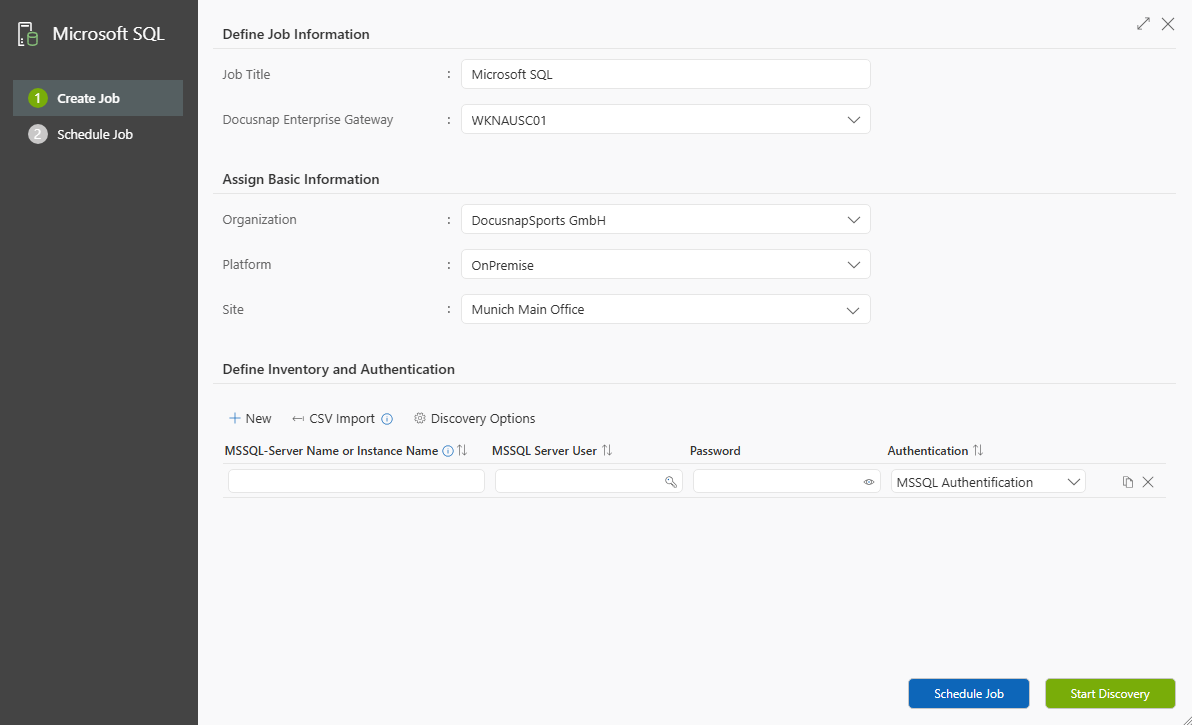Inventorying Microsoft SQL Server
2 minute read
Introduction
Microsoft SQL Server is Microsoft’s relational database management system (RDBMS) and serves as the central platform for numerous business-critical applications.
It manages structured data, provides extensive capabilities for queries, transactions, and reporting, and is often used in companies as a core component for ERP, CRM, or business intelligence solutions.
The Microsoft SQL Server inventory in Docusnap365 enables the central, agentless collection of all relevant information about SQL servers and their instances.
Via the Docusnap Enterprise Gateway, it gathers key details such as available databases, instance configurations, users, roles and permissions, as well as backup and replication information.
The goal is to provide a complete and always up-to-date overview of the SQL Server landscape—from individual instances and databases to security-relevant settings.
General
General information about the wizards and scheduling can be found in the Wizard Guide.
“Microsoft SQL” Wizard
In the MSSQL Server Name or Instance field, enter the desired SQL server.
“MSSQL Server Name or Instance”, “MSSQL Server User”, and “Password” always form a single unit.
Click New to add a new row.
Once the job has been submitted to the Docusnap Enterprise Gateway, each entry is processed individually.
For authentication, you can choose between Windows Authentication and SQL Server Authentication.
A corresponding template can be downloaded via the “i” icon next to the CSV Import button.
Further details can be found in the Wizard Guide.

Inventory Options
Using the Inventory Options button, you can specify whether system databases should be excluded.
This option limits the collected data to user-relevant databases and thus speeds up the inventory process.

Discovery-MSSQL.exe
Alternatively, Docusnap365 provides the Discovery-MSSQL.exe, which allows you to collect information from a Microsoft SQL Server without using the Docusnap Enterprise Gateway.
The generated output files can then be imported into Docusnap365 via an import job.